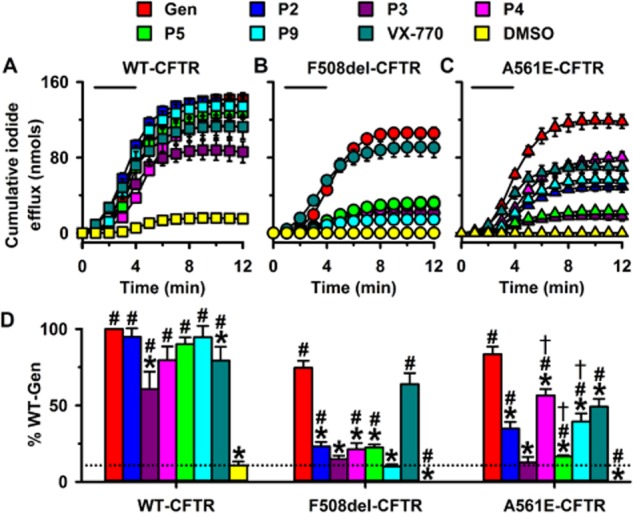Figure 7.

Rescue of F508del- and A561E-CFTR by CFTR potentiators. (A–C) Time courses of cumulative iodide efflux from BHK-WT-CFTR cells and low temperature-rescued BHK-F508del-CFTR and BHK-A561E-CFTR cells treated with forskolin (10 μM) and CFTR potentiators (genistein (Gen), 50 μM; test potentiators, 10 μM) or the vehicle DMSO (0.1% v·v−1) during the periods indicated by the bars. (D) Magnitude of iodide efflux elicited by different CFTR potentiators from BHK-WT-CFTR, BHK-F508del-CFTR and BHK-A561E-CFTR cells. Cumulative iodide efflux at 12 min is expressed as a percentage of that generated by wild-type CFTR treated with forskolin (10 μM) and genistein (50 μM). The dashed line indicates the DMSO response of wild-type CFTR; the DMSO responses of F508del- and A561E-CFTR are too small to be observed. Data are means ± SEM [n = 4, except ivacaftor (VX-770) where n = 6]; *P < 0.05 versus genistein data for same construct; #P < 0.05 versus wild-type CFTR DMSO response; †P < 0.05 versus F508del-CFTR data for same potentiator. Other details as in Figure 1.
